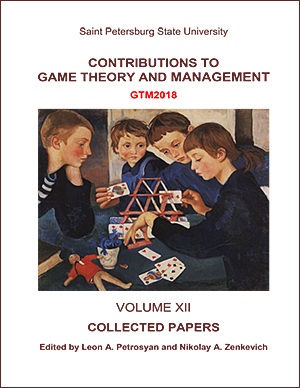Competitive Pricing for Cloud Information Resources
Abstract
This article explores a pricing model for cloud resources, based on use of two different payment schemes - reservation and pay-as-you-go, each of which is controlled by its administrator. The process of prices determination has a form of a two-stage game. At the first stage, administrators set prices for their cloud resources, trying to maximize their revenue. At this stage, a static non-cooperative two-person game is solved, where administrators act as players; their strategies are the prices for resources; their utilities depend both on prices and on the number of resources sold. At the second stage, with prices values given, customers choose a scheme of payment. Making a choice they seek to minimize their expected costs, which consist of the financial component and the waiting costs. First Wardrop principle is used in order to describe user behaviour and optimality conditions in the second stage of the game. The analysis of the solutions obtained shows the economic efficiency of an additional payment scheme. The numerical examples show, that the utility of the reservation scheme administrator is higher than that of the pay-as-you-go scheme.
Keywords:
pricing, cloud resources, two-stage non-cooperative game, Nash equilibrium
Downloads
References
Downloads
Published
How to Cite
Issue
Section
License
Articles of "Contributions to Game Theory and Management" are open access distributed under the terms of the License Agreement with Saint Petersburg State University, which permits to the authors unrestricted distribution and self-archiving free of charge.




